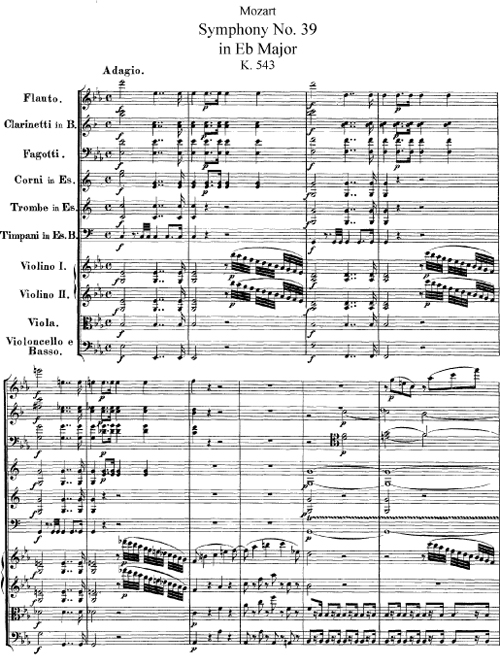This is first of Mozart’s last three symphonies, all of which he composed in 1788 in the miraculous span of just six weeks. Each of the three (No. 39 in E-Flat, No. 40 in G minor, and No. 41 in C Major) is a masterwork in its own right.
The E-flat Symphony is unique for its wind orchestration (one flute; clarinets instead of the usual oboes; bassoons; horns; trumpets), which gives it a mellow timbre and tone quality. It has a sunny character, full of optimism, stateliness and joy.
It opens with a grand adagio introduction, full of sweep and nobility. The following allegro has an 8-note theme interwoven among all sections of the orchestra. This theme becomes the basis for an impassioned development interspersed with violin scales.
Much of the second movement is based on a rising 4-note motif, to which are added impassioned violin outpourings and reflective wind choir passages. The Menuetto opens with a sweeping upward figure in the violins,interspersed with a graceful violin motif; the Trio has a folk-song Ländler quality, featuring clarinets, flutes, bassoons and horns.
The violins open the allegro Finale with a fast 8-bar melody, taken up in turn by the entire orchestra. After an entertaining development (with sudden forays into keys wildly unrelated to E-Flat!), a final recapitulation brings the symphony to an optimistic and dramatic close.
Symphony No. 39 in Eb
K. 543
Composed in 1788
By Wolfgang Amadeus Mozart






